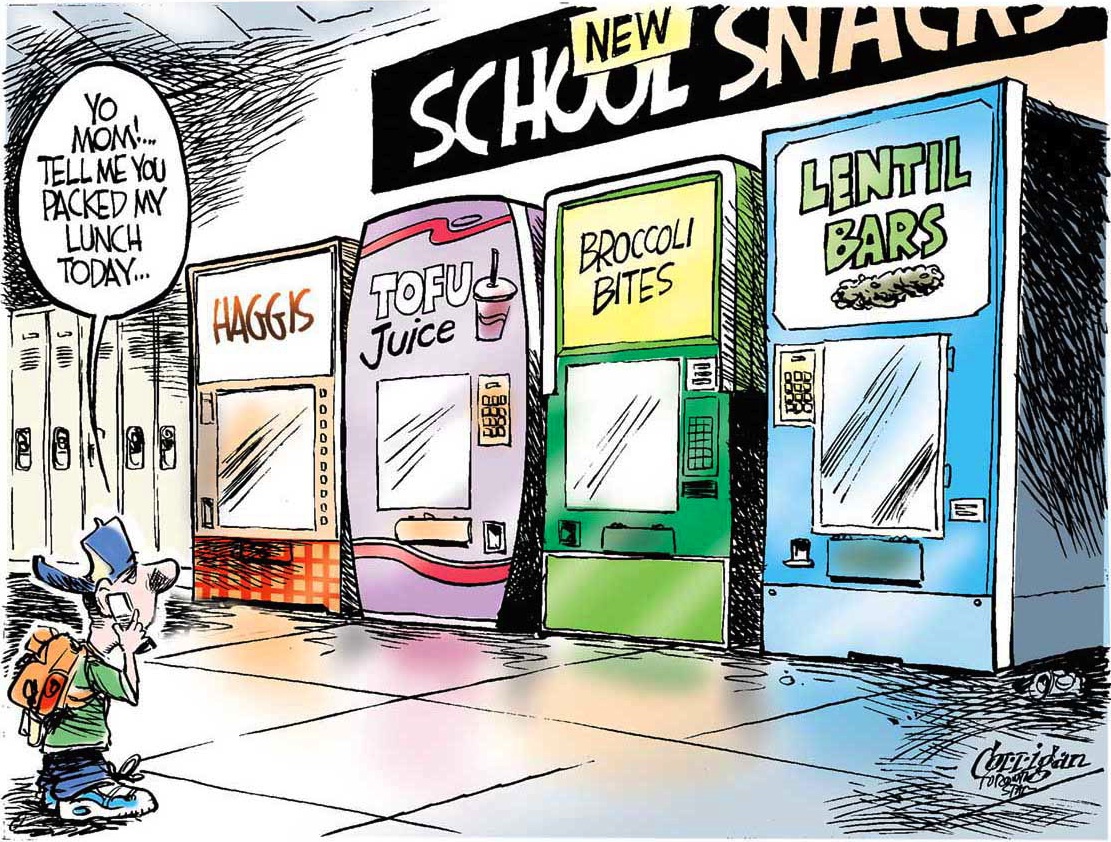When the board of education of Suzuka, Mie Prefecture, notified the city's 30 elementary schools and 13 junior high schools that school lunches would not be served on Dec. 20 and Jan. 12, it touched off a heated debate. Although the ostensible reason was an increase in the price of vegetables in schools already beset with a net deficit, there is more to the story.
In Japan, a tasty, nutritious hot lunch is viewed as a virtual right. Unlike school lunches served in other nations, Japan's are famous for their quality. That's not surprising in light of the healthful ingredients and careful preparation. While no one would label them gourmet by any means, they far surpass the traditional fare dished out in U.S. schools.
Despite the passage of the Healthy, Hunger-Free Kids Act of 2010, school lunches in the United States remain so unappetizing that much of the food is thrown away. That means too much of the combined lunch and breakfast programs costing $15 billion and serving nearly 32 million children, about 45 percent of the entire youth population, winds up as waste.



